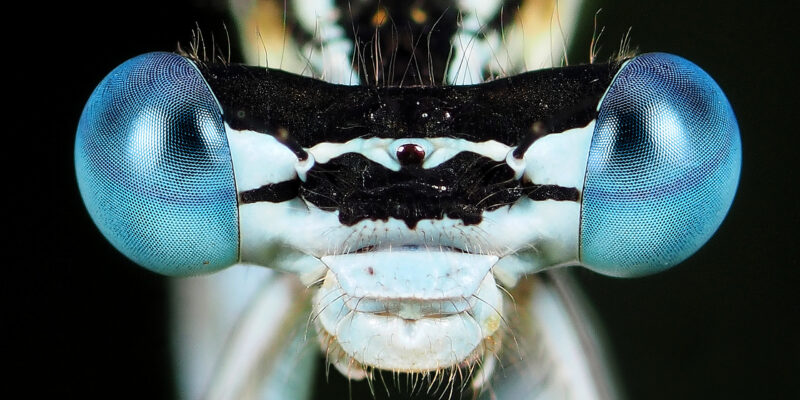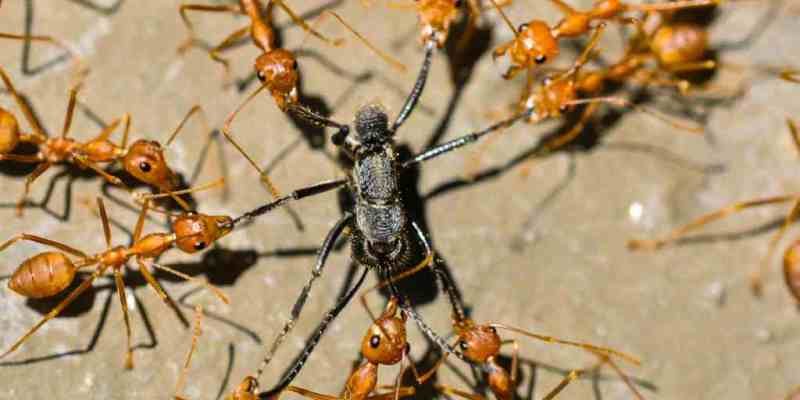Congratulations to the winners of the 2021-2023 Royal Entomological Society Journal Awards.
Medical and Veterinary Entomology is a Royal Entomological Society journal dedicated to the dissemination of impactful entomological research of medical, veterinary and forensic importance.
This journal highlights transmission dynamics of vector-borne pathogens, arthropod ecology, behaviour and development, and innovative control approaches, emphasizing novel research with original articles, short communications, and reviews, excluding purely descriptive studies.
With a focus on arthropod biology, and interactions with hosts and pathogens, this journal is a valuable platform for advancing medical, veterinary and forensic entomology research.

Winner Volume 35:
Caroline Wanjiku Plant sugar feeding patterns of wild-caught Aedes aegypti from dengue endemic and non-endemic areas of Kenya

This study used DNA barcoding to understand mosquito sugar feeding behaviours in arbovirus vectors of Kenya.
The judges noted that it,
“filled an important gap by exploring plant sugar composition in both male and female mosquitoes and across wet and dry seasons. The high diversity of sugars and host plant species found in mosquitoes has implications for the use of novel vector control tools. We chose this study because of the strong study design, the comprehensive methods employed and the author’s ability to put the results into the broader context.”
Caroline is an entomologist from Kenya and currently a post-doctoral researcher at the KEMRI-Wellcome Trust Research Programme (KWTRP), Kilifi Kenya. Her research focuses on evaluation and development of novel tools for the control of mosquitoes. She holds a PhD in Entomology from the University of Pretoria, South Africa, MSc Biochemistry and BSc Zoology both from Kenyatta University, Kenya. At the time of publishing the paper, Caroline was a doctoral candidate in the Department of Zoology and Entomology, Faculty of Natural and Agricultural Sciences at the University of Pretoria and the Behavioural and Chemical Ecology Unit (BCEU) of the International Centre of Insect Physiology and Ecology (icipe), Nairobi, Kenya.
Plant sugar feeding is a crucial yet understudied mosquito behaviour. Both mosquito sexes need it for flight, reproduction, and survival. Understanding this behaviour is key to effective vector control. Caroline said of the research, that the “plant feeding habits of Aedes aegypti (a vector of viral pathogens including dengue) is poorly described.


Using field entomology, molecular biology and chemical analytical approaches we examined the plant feeding patterns of wild-caught Ae. aegypti from two sites of varying dengue endemicity in Kenya to understand: the vector’s host-plant choices and how season and sex influence these choices; the extent of plant sugar feeding at the two sites across different seasons; and the composition of sugars acquired from plant feeding.”
Their research found that Ae. aegypti feeds on diverse plants with a predilection for Fabaceae and Malvaceae families; sex and seasonality influences feeding rates, and finally that plant feeding results in the acquisition of a variety of important sugars.

Winner Volume 36:
David López-Peña Environmental drivers of breeding sites in blackfly species of medical and veterinary importance in eastern Spain

This study sampled blackfly species throughout Eastern Spain and evaluated the effect of biotic, abiotic, meteorological, and landscape variables on the distribution and abundance of six black fly species.
The judges commented that,
“improved understanding of the variables that affect blackfly species development is vital for development of management plans for species with medical and veterinary impacts. We chose this study because the authors collected a huge amount of data that enabled them to conduct appropriate and complex statistical analyses to determine the variables relevant to each species. The paper was also very well written and the data presented with great care and finesse.”
David began his scientific journey at the University of Valencia, where he completed a Degree in Biology, a Master’s Degree in Tropical Parasitic Diseases, and a PhD on Simuliids of the rivers of the Valencian Autonomous Region, with Cum laude distinction. Subsequently, he has continued his research training through postdoctoral fellowships. Firstly, at the University of Greenwich in (UK) studying haematophagous adults, and the bioecology, distribution and diversity of pre-imaginal stages of blackfly species in rivers of England.


Secondly, at the University of Salamanca studying samples collected 30 years ago, and obtaining valuable preliminary results about the knowledge of Spanish species, their distribution and bioecology. Thirdly, at Comenius University (Slovakia), studying the richness and distribution of simuliid species in mountainous environments of Spain. Finally, he returned to the University of Salamanca to finish the uncompleted study, where new species records for several provinces of Spain were provided.
This study investigated the ecological and environmental factors shaping the distribution and abundance of six blackfly species of medical and veterinary importance in Spanish streams.
David explained that among 21 species identified, “Simulium pseudequinum and Simulium ornatum were the most widespread and abundant, while Simulium reptans and Simulium erythrocephalum showed restricted distributions. Distribution patterns were strongly influenced by elevation, water temperature, dissolved oxygen, and turbidity. Specialists’ species like Simulium equinum thrived at high altitudes, while S. erythrocephalum was restricted to warmer, low-altitude areas. conversely, generalists like S. pseudequinum adapted to a broader range of conditions. Species co-occurrence was generally low, suggesting competition for resources. Local biotic interactions, particularly species richness, were crucial in determining blackfly distribution, alongside broader landscape factors such as proximity to farms and temperature gradients.”
These findings provide valuable insights for pest control strategies and emphasize the need for seasonal monitoring to better understand blackfly life cycles and ecological interactions.

Winner Volume 37:
Jean Marc Tsagmo Ngoune Protein abundance in the midgut of wild tsetse flies (Glossina palpalis palpalis) naturally infected by Trypanosoma congolense s.l.
This study compared the protein abundance in the mid-gut of wild caught tsetse flies that were infected and uninfected with Trypanosoma congolense, the causative agent of nagana or Animal African Trypanosomiasis (AAT).
The judges reported that,

“Quantitative and qualitative differences were reported in those flies that were considered to refractory compared to those that were susceptible to infection. With further studies it is possible that the information gained in this study could be used to develop a system to modify fly vector competence. We chose this study for several reasons, despite the obvious challenges as the authors attempted to work with field-collected flies in order to confirm previous research in insectary flies. The manuscript was very well written and engaging with well presented data. Finally, the topic of the research is extremely important given the severity of the disease and the instability of livestock farming in the areas where it is prevalent.”
Jean Marc is an early career researcher, vector biologist/parasitologist by training, specialising in Neglected Tropical Diseases, and most focused on host-parasite-symbiont interactions. He is looking towards designing cost-effective tools to fight against the parasites/vectors, or to block disease transmission.
His research career began in Cameroun, where he started as entomologist identifying and characterizing the populations of mosquito vectors of malaria in different regions of the country. He was in awe of these tiny insects that carry deadly pathogens with major impacts on morbidity and mortality world-wide. Because of this, he decided to pursue a PhD in vector biology to investigate the seemingly complex interaction between arthropods and the pathogens they transmit. For this, he focused on trypanosome transmission by tsetse flies under natural condition through deciphering the three-way interaction between the tsetse fly, trypanosome, and the symbiotic bacteria.
During his PhD, he utilised multiple omic approaches including transcriptomic, proteomic, and meta-taxogenomic to take a step towards building a holistic view of the vector/parasite interaction. His doctoral work enabled him to focus on specific aspects of host (vector)-parasite interactions which he continued during his post-doctoral work, where using mouse model, he dissected the role of glycerol in parasite cell-cycle and the metabolism (within the mice and the vector), as well as the host’s immune response in different compartments (blood vs. skin) against different parasite’s stages in mice.
Tsetse flies, vectors of African trypanosomes, transmit either Human African Trypanosomiasis (sleeping sickness), or Animal African Trypanosomiasis (Nagana). Several approaches have been developed to control the disease, among which is the anti-vector Sterile Insect Technique, which unfortunately is not completely efficient since these sterile insects can still transmit the disease.

Jean Marc, therefore, describes his research here as taking an alternative “approach, attempting to control the fly’s vector competence by describing factors involved in the transmission. To achieve this, flies were collected in endemic foci in Southern Cameroon. After dissection, the proteins were compared between infected and uninfected flies to identify quantitative and/or qualitative changes associated with infection. Among the identified proteins, the most significantly enriched protein was Serine Protease Inhibitor (SERPIN), which is still subject to controversy given its involvement in both trypanosome establishment in the tsetse fly midgut, and a role on tsetse fly immunity.” This protein he further argued, could “thus be used to genetically modify insects and render them resistant to infection.”

Highly commended Early Career Entomologist awards:
Oswald Yedjinnavenan Djihinto Relative expression of key genes involved in nucleic acids methylation in Anopheles gambiae sensu stricto





